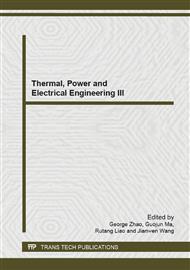p.1490
p.1494
p.1501
p.1508
p.1512
p.1516
p.1523
p.1527
p.1531
Supplied Demand Technique for Power System Balance Reliability Calculations
Abstract:
This paper presents an iterative power system balance reliability calculating technique ensuring better convergence and faster calculations. The technique is called "supplied demand". Nodal power imbalance is considered as the primary stochastic value under analysis. An analytical solution does not contain probability density functions. It results in faster calculations. Results were verified by Monte Carlo Simulation and showed high accuracy of the technique.
Info:
Periodical:
Pages:
1512-1515
Citation:
Online since:
June 2014
Price:
Сopyright:
© 2014 Trans Tech Publications Ltd. All Rights Reserved
Share:
Citation:


